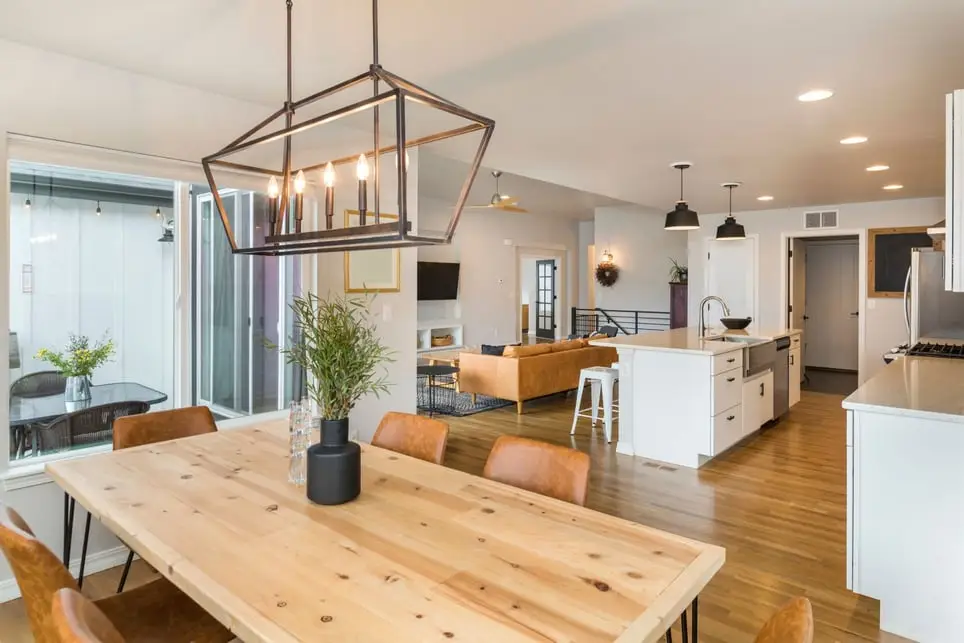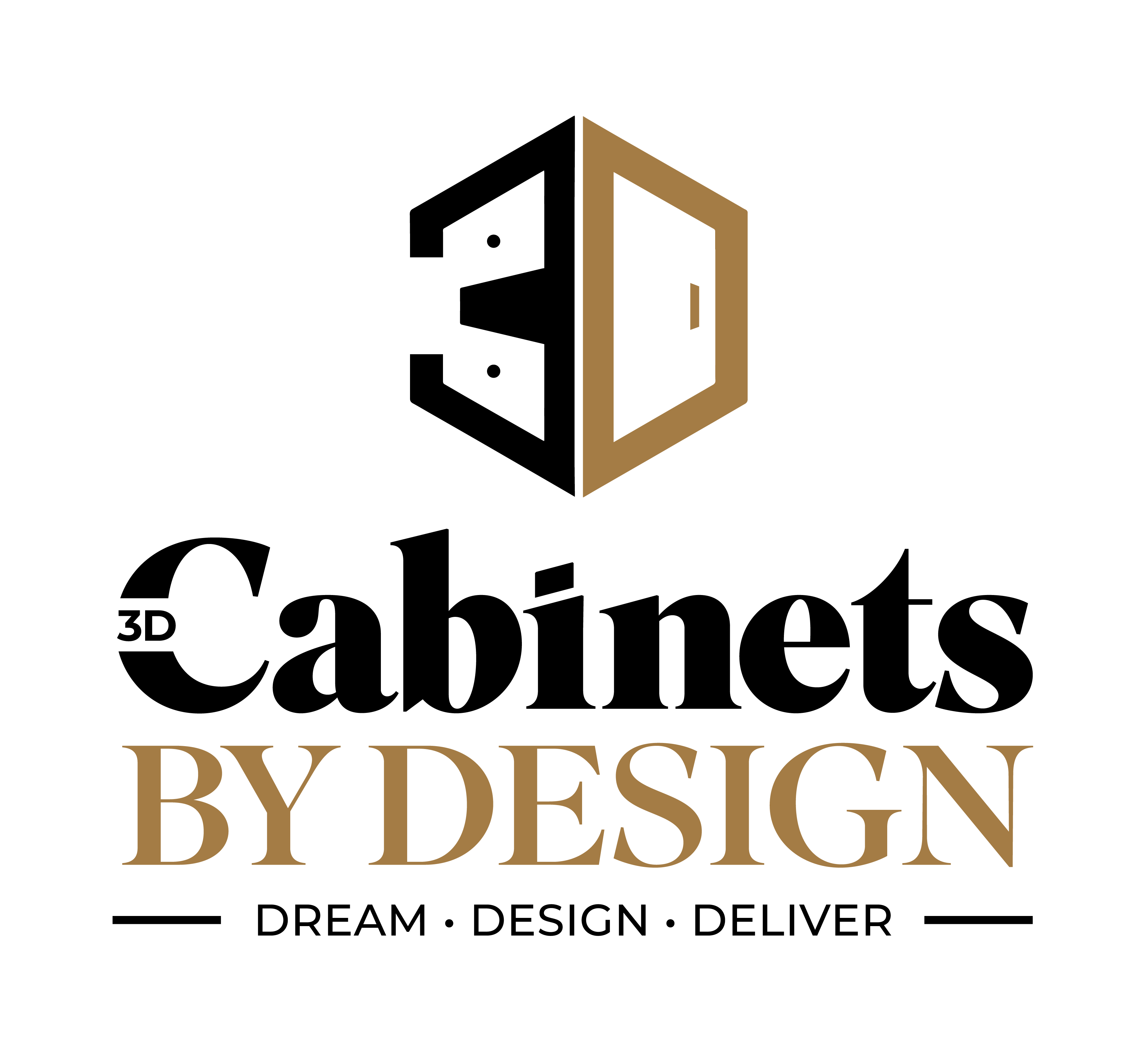When embarking on a kitchen renovation or designing a new home, one of the most crucial decisions you’ll face is choosing between an open concept and a closed kitchen layout. Both options have their unique advantages and considerations, and the choice you make can significantly impact your home’s functionality, aesthetics, and overall vibe. In this blog post, we’ll guide you through the pros and cons of each layout style, helping you determine which one aligns best with your lifestyle, preferences, and needs.
Open Concept Kitchen Layouts: Embracing the Flow
Open-concept kitchen layouts have gained immense popularity in recent years, and for good reason. They break down walls, both literally and figuratively, fostering a sense of connectivity and flow throughout your living spaces. By eliminating barriers between the kitchen, dining area, and living room, open layouts create a seamless, airy, and spacious environment that’s perfect for gatherings and family interaction.
One of the primary advantages of an open-concept kitchen is that it enhances social engagement. When you’re preparing a meal, you can easily converse with family members or guests in the adjacent living area, making it ideal for hosting gatherings and fostering a warm, communal atmosphere. Moreover, open layouts often allow for more natural light to flood the entire space, creating a brighter and more inviting environment.
However, it’s important to note that open-concept kitchens may not be for everyone. The lack of physical separation can sometimes lead to challenges with noise control and privacy. Cooking odors and kitchen mess may also be more noticeable in shared living spaces. If you prefer a quiet, contained cooking area or you value a separate space for formal dining and entertaining, an open-concept layout may not align with your preferences.
Closed Kitchen Layouts: Efficiency and Privacy
Closed kitchen layouts, on the other hand, are designed with function and privacy in mind. These layouts feature walls or partitions that enclose the kitchen area, providing distinct separation from adjacent living spaces. This separation can be a boon if you appreciate a dedicated space for cooking and meal preparation.
One of the primary advantages of a closed kitchen is its efficiency. With everything within reach and a clear boundary between the kitchen and other rooms, closed layouts can make meal prep a breeze. You have more control over the kitchen’s environment, making it easier to manage cooking odors and maintain a clean and organized space.
Privacy is another key benefit of closed layouts. If you value peaceful mornings with your coffee or a quiet place to work or study while others are in the living areas, a closed kitchen provides a sense of solitude and separation.
However, the drawback of closed kitchens is that they can feel less spacious and may not suit those who prefer an open, interconnected living space. They can also limit natural light, which is a consideration if you desire a bright and airy atmosphere.
Hybrid Kitchen Layouts: The Best of Both Worlds
If you’re torn between open and closed kitchen layouts, there’s a middle ground worth exploring: the hybrid kitchen layout. This approach combines elements of both styles to offer the best of both worlds. It often features a large opening or pass-through window that connects the kitchen to an adjacent living or dining area, providing the benefits of openness while preserving some separation.
A hybrid layout can be particularly appealing if you appreciate the flow and social aspects of an open kitchen but also want the option to create privacy or control cooking odors when needed. It’s a versatile solution that allows you to strike a balance between connected living spaces and functional, enclosed kitchen areas.
Making the Choice: Factors to Consider
The decision between open and closed kitchen layouts ultimately depends on your lifestyle, priorities, and personal preferences. To help you make an informed choice, here are some factors to consider:
- Family Dynamics: Think about how your family uses the kitchen space. If you have young children, an open layout might be advantageous for supervising them while cooking. On the other hand, closed layouts can provide a quieter space for work or study.
- Entertaining Habits: Consider how often you host gatherings or entertain guests. Open layouts are great for socializing, while closed layouts offer a private kitchen space to focus on cooking without distractions.
- Cooking Style: Your cooking habits play a significant role. If you love experimenting with elaborate recipes and occasionally produce strong odors, a closed layout may be preferable. For those who prefer quick and simple meals, an open kitchen could be more suitable.
- Natural Light: Think about your preference for natural light. Open layouts tend to maximize light exposure, while closed layouts may limit it. The availability of windows and exterior views also plays a role.
- Home Size: Consider the size of your home. In smaller spaces, open layouts can create a sense of spaciousness, while closed layouts can help define areas in larger homes.
- Resale Value: Research the resale value of homes with different kitchen layouts in your area. This can provide insights into what potential buyers may prefer.
- Personal Style: Your personal taste and design preferences matter. Explore both options and envision how they align with your vision for your dream kitchen.
Your Dream Kitchen Awaits
In the end, the choice between open-concept and closed-concept kitchen layouts comes down to your unique lifestyle, priorities, and design preferences. Whether you prioritize social interaction and natural light or value efficiency and privacy, there’s a kitchen layout that’s perfect for you.
At 3D Kitchens by Design, we understand that designing your dream kitchen is a deeply personal and significant undertaking. If you’re still unsure about which layout suits you best or if you’d like expert guidance in bringing your vision to life, don’t hesitate to reach out. Our experienced team is here to provide personalized advice and design solutions tailored to your needs and preferences. Contact us at (208) 819-7927 or email us at here to get started on creating the kitchen of your dreams. We look forward to making your dream kitchen a reality.



